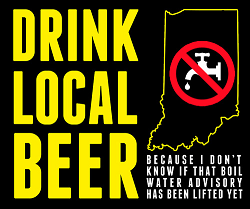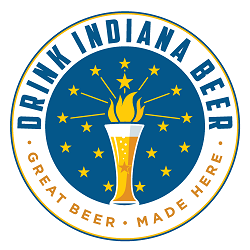A weekly column by Roger A. Baylor.
(Twenty-eighth in a series chronicling my travel year 1985)
---
"The Fenni live in astonishing barbarism and disgusting misery: no arms, no
Tacitus (c. 55-120) "Germania"
No, Tacitus was not speaking of youthful backpackers in Europe.
You might guess his passage explains why many non-Finnish speakers refer to the Suomalaiset people (as they call themselves) as Finns, and this is partially correct, although the Fenni referenced by the Roman historian probably were the Sami, natives of the Arctic region, later to become known as Lapps, which may be a mild pejorative in the fashion of Canucks, and anyway, there are many more of the Sami in Svenska (Sweden) that Suomi (Finland).
Concurrently, the Finnish language is fiendishly bizarre to non-natives. It is from the Uralic family of languages, entirely removed from Russian or German.
English: My hovercraft is full of eels.
Finnish: Ilmatyynyalukseni on täynnä ankeriaita.
Hence my advice to native English speakers: Please stop and give thanks that so many others on the planet deign to learn our language. For their willingness to absorb English in sufficient measure to help tourists like me (and you), we collectively owe the Finns a beer, a hug, and maybe some mustamakkara.
More about that particular delicacy in a moment.
On July 29, 1985, the overnight ferry from Stockholm docked in Turku, Finland. Immediately upon debarking, I presented my passport to the uniformed man and received yet another national entry stamp, my fourteenth, stamped straight and level, neatly contained within the delineated box. With every degree of latitude traveling north, greater attention was given to orderly detail – or so it seemed.
Another country and the same familiar drill: Lodging, eating, drinking and learning. What did I know about Finland at this early stage of my global awareness?
I knew that Finland’s history as an autonomous nation was relatively brief. For centuries, Finland was dominated by Sweden. Thereafter, it was attached to the pre-Soviet-era Russian empire. Finland only became independent in 1919 following World War I, and then fought twice against the USSR during World War II – retaining its independence, garnering acclaim for sheer tenaciousness, but still losing territory (Karelia) amid the post-war reordering.
A term in foreign relations derived from this state of affairs, post-1945: Finlandization, defined as the process of a stronger country (the USSR) exerting influence against a weaker country (Finland), while allowing the latter to remain (mostly) free.
These things I knew about Finland. I also knew there was …
- A composer named Sibelius, who spoke powerfully to the Finnish spirit through a piece of nationalistic music known as Finlandia
- A vodka sold overseas by the same name as the composer
- An indigenous fermented beverage, Sahti, which often was homebrewed from a variety of grains, spiced with juniper berries, and filtered through twigs
- A tradition of highly heated bathing, the sauna, involving sweating, swatting and swimming
- An early 20th-century experience with Prohibition, similar to America’s
It was Monday morning, and it must be the port city of Turku, though only briefly. On Thursday morning, I’d be departing from Helsinki for the weekend bus tour of Leningrad, which from the outset of my European conspiracy had been envisioned as the highest point of what I imagined would be my first and only journey to the continent.
The most logical course would have been taking the short train ride straight to Helsinki, finding a hostel, and relaxing. Instead, I hopped a local train to Tampere (TUM-puh-reh), a mysterious inland city appearing in neither of my two sacred travel texts.
---
Finland, Finland, Finland,
The country where I want to be,
Pony trekking or camping,
Or just watching TV.
Finland, Finland, Finland,
It’s the country for me.
—Monty Python
Tampere was an option because it offered a final opportunity to take advantage of my cousin Don’s multi-national connections. Among Don’s European friends were Henrik and Eva, natives of Tampere, who had been students of Don’s at the beginning of his academic career. They maintained contact and had met on previous occasions. He let them know that I might be coming to visit, and gave me their street address and phone number.
Intriguingly, Henrik came from a former brewery-owning family. Just months prior to my trip, he and his siblings had finalized a deal to sell Tampere’s Pyynikki Brewery to Sinebrychoff, the largest brewing company in Finland (now owned by Carlsberg).
I’d never in my entire life consumed a Finnish beer, but one of Pyynikki’s brands, Amiraali, was sufficiently well known to have merited inclusion in Michael Jackson’s seminal World Guide to Beer. Amiraali’s unique labeling stratagem was a series of portraits of famous admirals, the majority of them European, but including Japan’s legendary Heihachiro Togo.
Why would a Japanese admiral appear on a Finnish beer label? It might have had something to do with his most famous victim. Togo led the fleet that decisively defeated the Tsar’s navy in 1905 at the Battle of Tsushima during the Russo-Japanese War.
Perhaps one aspect of Finlandization was periodic outbreaks of subtle, passive-aggressive glee -- over a few Amiraali beers. Three decades later, the Amiraali label featuring Togo remains in production -- as brewed under contract in Japan, where it is sold at a memorial to the admiral.
Pyynikki originated in 1897, and later became part of a consortium with eight other local breweries. It rose to become first among erstwhile equals during the stewardship of Henrik’s grandfather (I think) Sulo, who was succeeded by his wife Rosa.
Tampere originally was settled at the narrowest point of land separating two lakes, astride rapids that provided power for mills. By the 19th-century, Tampere was an industrial city (textiles and metallurgy) often compared to Manchester, England, and as we know, factory workers drank lots of beer in those times. In turn, their consumption was good for both brewers and prohibitionists.
By the late 1800s, Tampere’s brewers had switched to lager brewing on the German model. Pyynikki’s brewing plant was located at Koulukatu 11, only a few blocks from the epicenter of industry in the city. Henrik’s family lived close to the brewery. After the family sold to Sinebrychoff, the brewery remained active for less than a decade, eventually being shuttered in the 1990s. Since then, the buildings have been adaptively reused as housing.
I’ve met Henrik and Eva twice since 1985, once in the French Alps, and on a return trip to Tampere in 1999. However, we never got together in 1985, and the blame lies with me. My virulent telephonophobia was a malady borne of crippling shyness, and as in Pecetto and Bergen, it defied my resolve to communicate.
Simply stated, I couldn’t bring myself to call them. Instead, I bought a city map and a bus ticket, and found my way to their home to knock on their door. There was no answer, and this was little surprise; it was late morning, and surely they were at work.
This time there’d be no miracle comeback in the late innings like in Italy and Norway. I punted and made the most of my day in Tampere. Happily, our paths eventually crossed.
---
Tampere’s youth hostel wasn’t far away, situated in what appeared to be student housing in the university quarter, and tourists weren’t exactly beating down its doors. My belongings duly stowed, I returned downtown and found a restaurant with a handy fixed price lunch special.
The eatery was on the second floor of a 1960s-era retail structure facing one of the main streets, and the rustic wood paneling in the dining room reminded me of Tommy Lancaster’s, an old-school eatery back in New Albany.
Unsurprisingly, the menu was considerably different than Lancaster’s. I chose the mixed sausage platter on the recommendation of an English-speaking waitress, who observed that because we didn’t eat reindeer in America, I should try some in Finland.
The waitress found it difficult to describe one of the other sausages, one colored a deep reddish black and having an odd texture. She translated the word “mustamakkara” as black sausage, and the significance slowly dawned on me – “black” in sausage means “blood.” It was the local specialty, in fact.
There was a pause, but when you’re eating on a budget, parts is parts, calories are calories, and you clean your plate.
---
A state-run liquor store sat down the street from the restaurant, and it yielded a bottle of Koff and two of Amiraali. One of them was Lord Nelson, and the other wasn’t. Togo was not in stock. The lagers were cool, not cold, and I happily drank them straight from the bottle while seated on a park bench somewhere in downtown Tampere, watching the local people pass by.
For all I knew at the time, two of them might have been Henrik and Eva, returning home from work.
Back at the hostel, I made the acquaintance of my roomies for the evening. In a room with three bunk beds, five of us would be sleeping. My four new friends were traveling together as a group, evidently visiting the university. They were friendly and engaging, but didn’t speak very much English, and judging from appearances and the sound of their language, I guessed them to be Middle Easterners.
The following morning at breakfast their passports came out, and it was revealed that they were Libyans, at the time regarded by Americans as prime exponents of international terrorism, second only to Palestinians.
And I wasn't even carrying a gun.
These Libyan chaps seemed nice enough to me. After coffee, we said our goodbyes and wished each other well. I set off for Tampere’s train station, and Helsinki.
---
Previously:
The PC: Euro ’85, Part 27 … Stockholm's blonde ambition, with or without mead-balls.
The PC: Euro ’85, Part 26 … The Hansa brewery tour, and a farewell to Norway.
The PC: Euro ’85, Part 25 … Frantic pickled Norway.
The PC: Euro ’85, Part 24 … An aspiring “beer hunter” amid Carlsberg’s considerable charms.
The PC: Euro ’85, Part 23 … A fleeting first glimpse of Copenhagen.
The PC: Euro ’85, Part 22 … It's how the tulips were relegated.
The PC: Euro ’85, Part 21 … A long day in Normandy, though not "The Longest Day."
The PC: Euro ’85, Part 20 … War stories, from neutral Ireland to Omaha Beach.
The PC: Euro ’85, Part 19 … Sligo, Knocknarea, Guinness and Freddie.
The PC: Euro ’85, Part 18 … Irish history with a musical chaser.
The PC: Euro '85, Part 17 ... A first glimpse of Ireland.
The PC: Euro ’85, Part 16 … Lizard King in the City of Light.
The PC: Euro ’85, Part 15 … The traveler at 55, and a strange interlude.
The PC: We pause Euro '85 to remember the Mathäser Bierstadt in Munich.
The PC: Euro ’85, Part 14 … Beers and breakfast in Munich.
The PC: Euro ’85, Part 13 … Tears of overdue joy at Salzburg's Augustiner.
The PC: Euro ’85, Part 12 … Stefan Zweig and his world of yesterday.
The PC: Euro ’85, Part 11: My Franz Ferdinand obsession takes root.
The PC: Euro ’85, Part 10: Habsburgs, history and sausages in Vienna.
The PC: Euro ’85, Part 9 … Milan, Venice and a farewell to Northern Italy.
The PC: Euro ’85, Part 8 … Pecetto idyll, with a Parisian chaser.
The PC: Euro ’85, Part 7 … An eventful detour to Pecetto.
The PC: Euro ’85, Part 6 … When in Rome, critical mass.
The PC: Euro ’85, Part 5 … From Istanbul to Rome, with Greece in between.
The PC: Euro ’85, Part 4 … With Hassan in Pithion.
The PC: Euro ’85, Part 3 … Growing up in Greece.
The PC: Euro '85, Part 2 ... Hitting the ground crawling in Luxembourg.
The PC: Euro ’85, Part 1 … Where it all began.
_







No comments:
Post a Comment